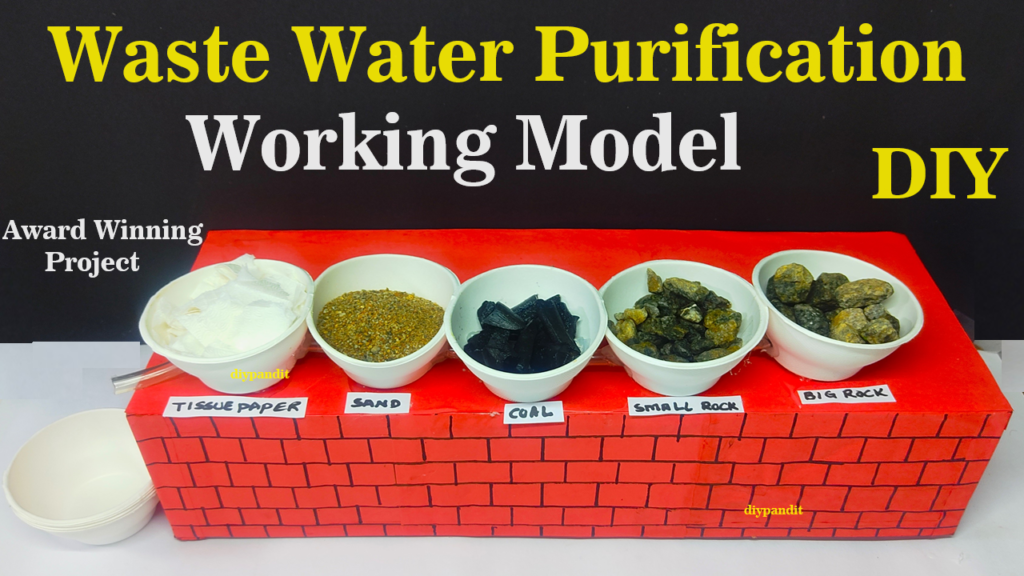Creating a wastewater treatment working model with five stages in separate glass cups can be an educational and visually engaging project.
Below is a simplified version of such a model that demonstrates the basic principles of water purification.
Each glass cup will represent a different stage of the treatment process.

Materials Needed:
- Five glass cups or jars
- Gravel or small rocks
- Sand
- Activated charcoal or carbon (available in pet stores)
- Filter paper or cloth
- Dirty water (representing wastewater)
- Clean water (for comparison)
- Plastic tubing (optional)
- Labels or markers to label each cup
Instructions:
- Set Up the Glass Cups:
- Label each glass cup with the name of the treatment stage it represents (e.g., Screening, Primary Treatment, Secondary Treatment, Filtration, Disinfection).
- Screening (Physical Separation):
- Pour the dirty water (representing wastewater) into the first glass cup labeled “Screening.”
- Add a layer of gravel or small rocks to the bottom of the cup. This will help to trap large solid particles and debris.
- Allow the water to sit for a short period, allowing larger particles to settle at the bottom.
- Carefully pour the water into the next cup, leaving the settled solids behind.
- Primary Treatment (Physical and Chemical Separation):
- Pour the partially clarified water from the first cup into the second cup labeled “Primary Treatment.”
- Add a layer of sand on top of the settled solids. The sand will filter out finer particles and some organic matter.
- Allow the water to pass through the sand layer. You can use plastic tubing to create a simple filtration system if desired.
- As the water passes through the sand, observe how it becomes clearer.
- Secondary Treatment (Biological Treatment):
- Pour the partially clarified water from the second cup into the third cup labeled “Secondary Treatment.”
- Add a layer of activated charcoal or carbon on top of the sand. This will help to remove dissolved contaminants and impurities.
- Place a layer of filter paper or cloth on top of the charcoal to prevent it from mixing with the water.
- Allow the water to pass through the charcoal layer.
- As the water passes through the charcoal, observe how it further improves in clarity and odor.
- Filtration (Advanced Treatment):
- Pour the water from the third cup into the fourth cup labeled “Filtration.”
- You can use additional layers of sand, activated charcoal, or other filtration media to further purify the water.
- Allow the water to pass through the additional filtration layers.
- Observe how the water quality continues to improve with each filtration step.
This simplified model demonstrates the basic principles of water purification and wastewater treatment. You can enhance the model by adding additional stages or components to represent more complex treatment processes found in real wastewater treatment plants.
Additionally, you can discuss the importance of proper wastewater management and conservation practices in real-world applications.

